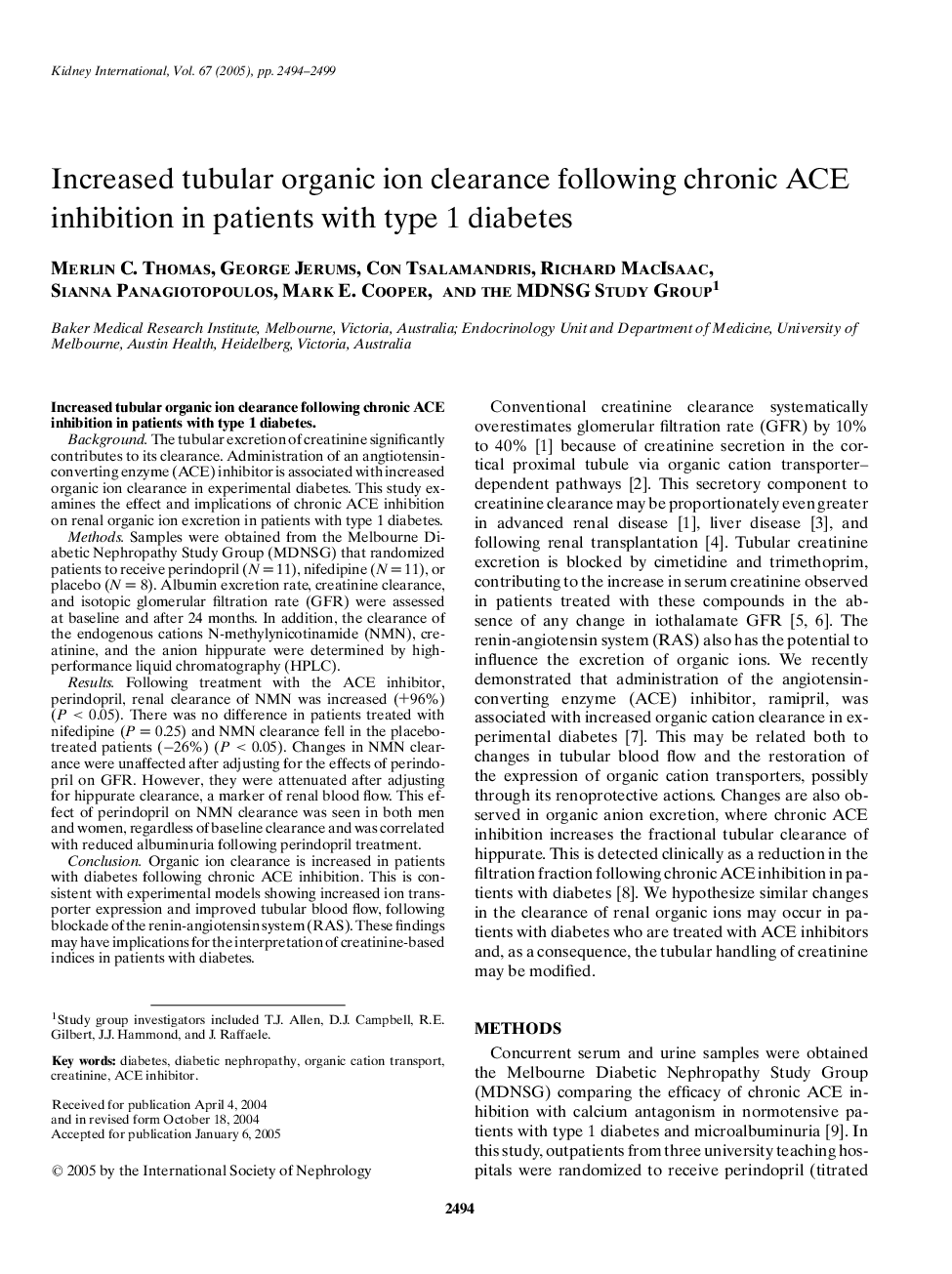| Article ID | Journal | Published Year | Pages | File Type |
|---|---|---|---|---|
| 3890269 | Kidney International | 2005 | 6 Pages |
Increased tubular organic ion clearance following chronic ACE inhibition in patients with type 1 diabetes.BackgroundThe tubular excretion of creatinine significantly contributes to its clearance. Administration of an angtiotensin-converting enzyme (ACE) inhibitor is associated with increased organic ion clearance in experimental diabetes. This study examines the effect and implications of chronic ACE inhibition on renal organic ion excretion in patients with type 1 diabetes.MethodsSamples were obtained from the Melbourne Diabetic Nephropathy Study Group (MDNSG) that randomized patients to receive perindopril (N = 11), nifedipine (N = 11), or placebo (N = 8). Albumin excretion rate, creatinine clearance, and isotopic glomerular filtration rate (GFR) were assessed at baseline and after 24 months. In addition, the clearance of the endogenous cations N-methylynicotinamide (NMN), creatinine, and the anion hippurate were determined by high-performance liquid chromatography (HPLC).ResultsFollowing treatment with the ACE inhibitor, perindopril, renal clearance of NMN was increased (+96%) (P < 0.05). There was no difference in patients treated with nifedipine (P = 0.25) and NMN clearance fell in the placebo-treated patients (-26%) (P < 0.05). Changes in NMN clearance were unaffected after adjusting for the effects of perindopril on GFR. However, they were attenuated after adjusting for hippurate clearance, a marker of renal blood flow. This effect of perindopril on NMN clearance was seen in both men and women, regardless of baseline clearance and was correlated with reduced albuminuria following perindopril treatment.ConclusionOrganic ion clearance is increased in patients with diabetes following chronic ACE inhibition. This is consistent with experimental models showing increased ion transporter expression and improved tubular blood flow, following blockade of the renin-angiotensin system (RAS). These findings may have implications for the interpretation of creatinine-based indices in patients with diabetes.
